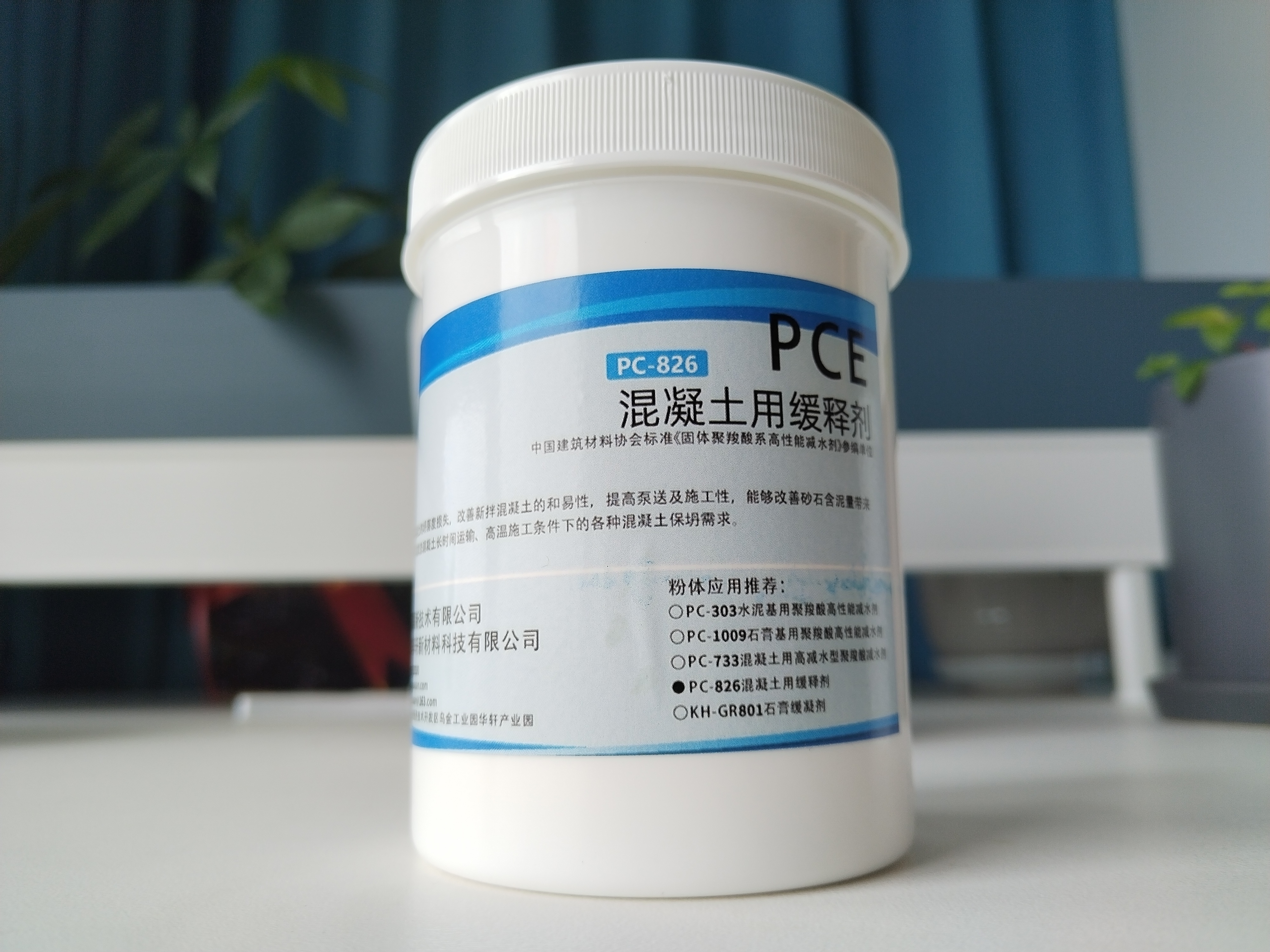Polycarboxylate Superplasticizer (PCE), as a third-generation high-performance water-reducing agent, has become one of the core materials in modern concrete technology due to its highly designable molecular structure, high water-reduction rate, and excellent environmental performance. In recent years, powdered polycarboxylate superplasticizers have demonstrated significant advantages in the concrete field because of their convenient transportation, high storage stability, and ability to meet special engineering requirements.
1. Mechanism of Action for Powdered Polycarboxylate Superplasticizers
Polycarboxylate superplasticizers achieve dispersion through electrostatic repulsion along the molecular backbone and steric hindrance effects from the side chains. Their molecular structure comprises a backbone containing carboxyl groups and polyether side chains. By adsorbing onto cement particle surfaces, they form a steric barrier that effectively inhibits particle agglomeration. Compared to liquid products, powder polycarboxylate superplasticizers—manufactured via spray drying or physical adsorption processes—offer the following characteristics: 1) Dispersion Stability: The powder form prevents molecular chain degradation issues common in liquid products during prolonged storage.
2) Controlled Release: Certain powder products employ coating technology to achieve gradual release of superplasticizing components, extending slump retention time.
3) Broad adaptability: Demonstrates superior compatibility with highly absorbent aggregates (e.g., manufactured sand) and concrete systems in high-temperature environments. For concrete applications, Huaxuan High-Tech introduces a series of powder polycarboxylic acid superplasticizers specifically formulated for concrete. These products meet demands for high water reduction rates, extended slump retention, and broad adaptability. PC-733 Powder Polycarboxylic Acid Superplasticizer for Concrete (High-Reduction Type) 
 PC-826 Powder Polycarboxylic Acid Superplasticizer for Concrete (Slump Retention Type)
PC-826 Powder Polycarboxylic Acid Superplasticizer for Concrete (Slump Retention Type) 
2. Application Advantages of Powder Polycarboxylic Acid Water Reducers
2.1 High Water Reduction Rate and Low Dosage
With solid content typically ≥95%, powder polycarboxylic acid water reducers achieve 25%-40% water reduction at just 0.1%-0.3% of cementitious material weight, significantly enhancing concrete density and strength.
2.2 Optimized Construction Performance
Slump Retention: By adjusting side chain length and functional group ratios, customized slump retention times of 2–6 hours can be achieved, meeting long-distance pumping requirements. Viscosity Adjustment: Suitable for self-compacting concrete (SCC), reducing viscosity without segregation.
2.3 Environmental Sustainability and Economic Efficiency Low Transportation Costs: Powder form reduces transport volume by approximately 70% compared to liquid products, lowering carbon emissions. Alkali-Free Chloride Addition: Eliminates the risk of alkali-aggregate reactions introduced by traditional water reducers, enhancing concrete durability. 3. Key Application Technologies for Powder Polycarboxylic Acid Water Reducers 3.1 Dosage Control and Adaptability Optimization Precise Metering: Automated metering equipment is recommended, with error control within ±0.5%. Binder Compatibility: For different admixtures like mineral powder and fly ash, adjust molecular structure (e.g., increasing sulfonic acid group ratio) through testing to meet specific application requirements. 3.2 Blending Technology Powdered polycarboxylate superplasticizers can be blended with retarders, early-strength agents, air-entraining agents, and defoamers to form multifunctional admixture systems. Examples:
Ultra-early strength system: Blending sulfoaluminate cement with powdered polycarboxylate superplasticizer achieves ≥20MPa strength within 8 hours.
Freeze-thaw resistance system: Incorporating air-entraining components reduces concrete bubble spacing coefficient to ≤200μm. 3.3 Construction Process Considerations Dry-mixing method: Pre-mix with aggregates and cement to ensure uniform dispersion. Temperature Sensitivity: Add slow-release components in high-temperature environments to prevent excessive slump loss. 4. Technological Development Trends Functional Design: Develop multifunctional powder polycarboxylate superplasticizers combining water reduction, slump retention, viscosity reduction, and shrinkage resistance. Green Preparation Processes: Replace petroleum-based monomers with bio-based raw materials (e.g., lignin derivatives). Smart Applications: Implement intelligent release mechanisms for water reducers via nano-carrier technology (e.g., pH- or temperature-triggered). Conclusion: Powdered polycarboxylic acid water reducers have become a key driver in concrete technology advancement due to their high efficiency, environmental friendliness, and adaptability. Future innovations in molecular structure design and application technologies will further unlock their potential in specialized engineering, green building materials, and smart construction sectors.


